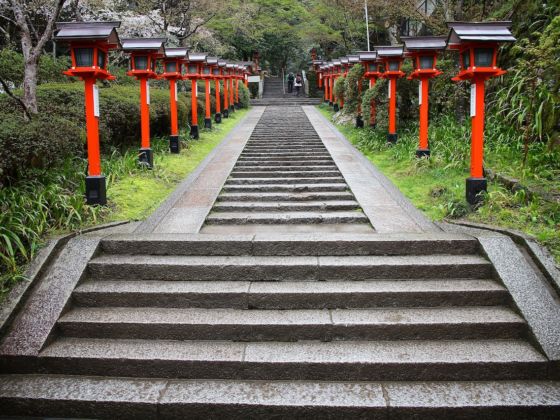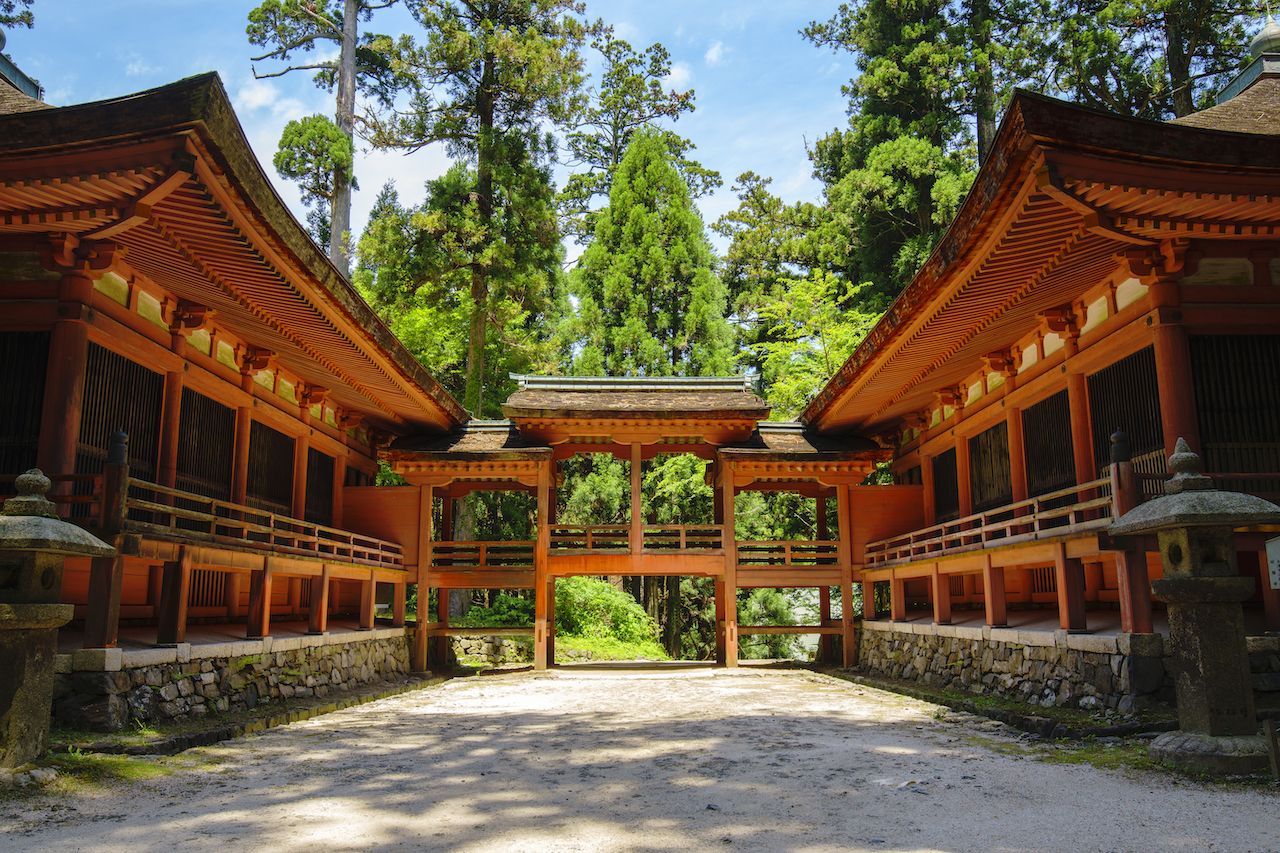Kyoto is best known for its wealth of temples, shrines, and tea houses. It’s a place where traditional culture blends seamlessly with modern life. What’s less well-advertised is the fact that the city also has some areas of breathtaking natural beauty, and it’s not just meticulously sculpted Zen gardens and tourist-filled bamboo groves. The rugged, forested mountains that surround the city on three sides provide an ideal escape from the crowds and urban life. Here are four day hikes that are perfect for getting out in the wilderness and seeing a different side to Japan’s ancient city.


Four Stunning Day Hikes You Need to Do in Kyoto
1. Kurama to Kibune

Photo: picotan/Shutterstock
This hike is an ideal blend of nature and culture, taking you from one traditional village to the next via an atmospheric mountaintop temple. Tucked away in the north of the city, the 2.4-mile trail both starts and ends at a train station, meaning that it’s also very easily accessible.
The first part of the route takes you through the Kurama-dera temple complex, past prayer halls, and up stone steps lined with bright red lanterns. It’s worth taking the time to explore here as the temple has plenty of interesting features and is an attraction in its own right.
When you’re ready, follow the trail out the back of the complex and up into the serene woodland slopes of Mount Kurama. You’ll find yourself surrounded by giant pine trees, their gnarled roots stretching visibly over the forest floor beneath you like something out of a fairytale. At the summit, there are a number of benches where you can relax and admire the scenery before heading down towards Kibune. Several smaller temple buildings can be found along the way while the village itself has riverside restaurants and an interesting shrine to visit before heading to the station.
Getting there: Take the Eizan Line train from Demachiyanagi station to Kurama (the last stop) and head up the hill to Kurama temple. The hike finishes at Kibuneguchi station where you can catch a train back to Demachiyanagi.
2. Mount Hiei

Photo: beeboys/Shutterstock
Kyoto’s sacred mountain, Mount Hiei is where the sprawling Enryakuji temple UNESCO World Heritage site is located. Straddling the borders between Kyoto and the neighboring prefecture of Shiga, most people get one of the two cable cars up to the top, but it’s also possible to reach the 2,780-feet summit on foot.
Hiking up is the best way to appreciate everything Hiei has to offer. The narrow trails that wind up towards its peak lead through dense forest and towering cedar trees, and certain spots will have you scrambling over rocks and roots and under tree branches. Some parts have clear paths and makeshift steps to help you on your way while in others it feels as though you’re winding along a channel cut into the ground by a long-forgotten river.
When you reach the top, you can enjoy phenomenal views out over Kyoto city, as well as explore the impressive architecture and endless features of Enryakuji. While you can make the hike year-round, bear in mind that in winter the cable cars will be closed, and the summit will be covered in snow.
Getting there: There are a few different hiking trails up the mountain, but one of the easiest to access is just a 15-minute walk from Shugakuin station on the Eizan Line. From the station, head east and follow the river towards the mountain to reach the start of the trail.
3. Takao to Hozukyo

Photo: CHEN MIN CHUN/Shutterstock
The longest hike on the list, this is a highly enjoyable riverside trail with optional detours to two peaceful temples and one mystical waterfall. Traversing about seven miles through the forests of northwestern Kyoto, the route begins in the picturesque village of Takao. Here you can choose to explore the grounds of Saimyoji and Jingoji temples – both of which see far fewer visitors than those more centrally located — or head straight to the banks of the river to begin the hike.
The path meanders alongside emerald waters in a valley surrounded by mountains, making it stunningly beautiful for much of the hike. About halfway through you’ll find yourself on a gravel bank that makes an ideal lunch or rest spot. Alternatively, there are some picnic tables just across the water. If you have time, take the detour to the Kuya-no-Taki waterfall. Hidden in the depths of the forest and surrounded by abandoned shrine buildings, it’s a genuinely atmospheric feature that’s well worth a visit. The walk then passes through the village of Kiyotaki before joining the river again. The final section takes you back onto the road and down to Hozukyo station.
Getting there: Take a bus towards Takao and get off at Yamashirotakao. Head back the way you came and down to the river via the set of stairs marked with a “Hiking Course” sign. The trail ends at Hozukyo station where you can catch a train back to the city center.
4. Mount Atago

Photo: dokosola/Shutterstock
Mount Atago is the tallest peak in Kyoto city at 3,032 feet tall. High up at its summit stands Atago Shrine, a pleasant and tranquil place believed to offer pilgrims divine protection from fire.
The hike to the top is straightforward but strenuous, consisting of a seemingly endless number of stone steps up the mountainside — and this time there’s no cable car! When you’re almost there, you’ll pass under a striking black wooden gate, followed by a flatter, spacious area with benches and a panoramic view over Kyoto. The highest point is a little further on, at the top of yet more stairs, and marked by the shrine itself.
As with Mount Hiei, while it is technically possible to make the climb all year round, the winter months will see the summit covered in snow and more difficult to reach. For a really unique experience, join the overnight pilgrimage that takes place annually from July 31 to August 1. Strings of spellbinding lanterns are hung along the entire route, and those who make it to the shrine are said to be granted 1,000 days of protection against fire-related disasters. You can’t say that’s not worth the effort.
Getting there: Take a bus to Kiyotaki, then cross the bridge and walk through the village. The trailhead is marked by a red torii gate, which you can spot on the Takao to Hozukyo hike.